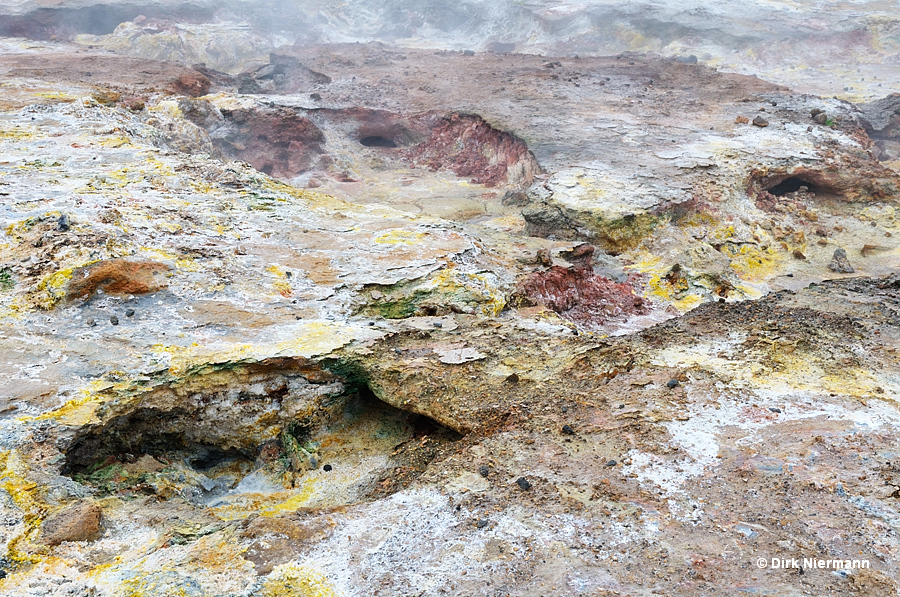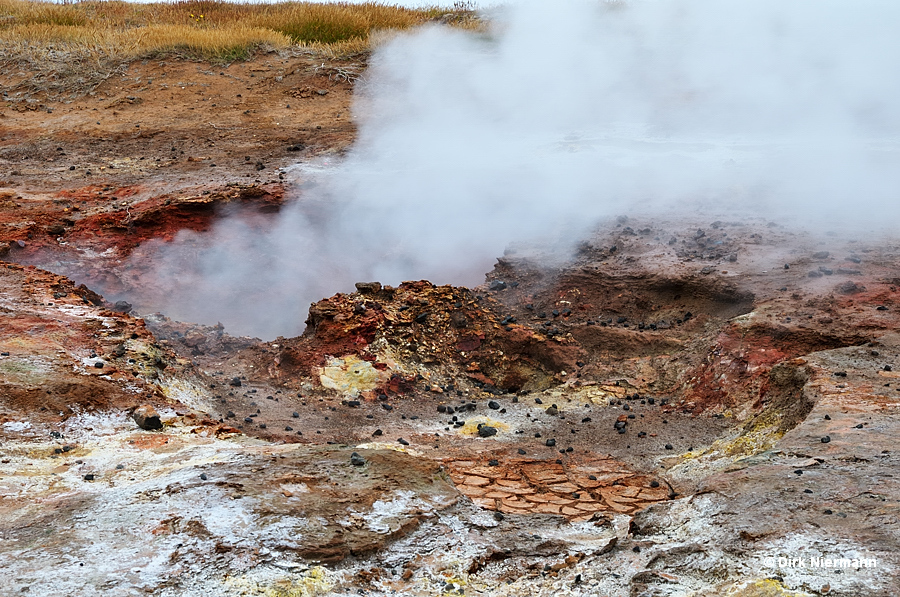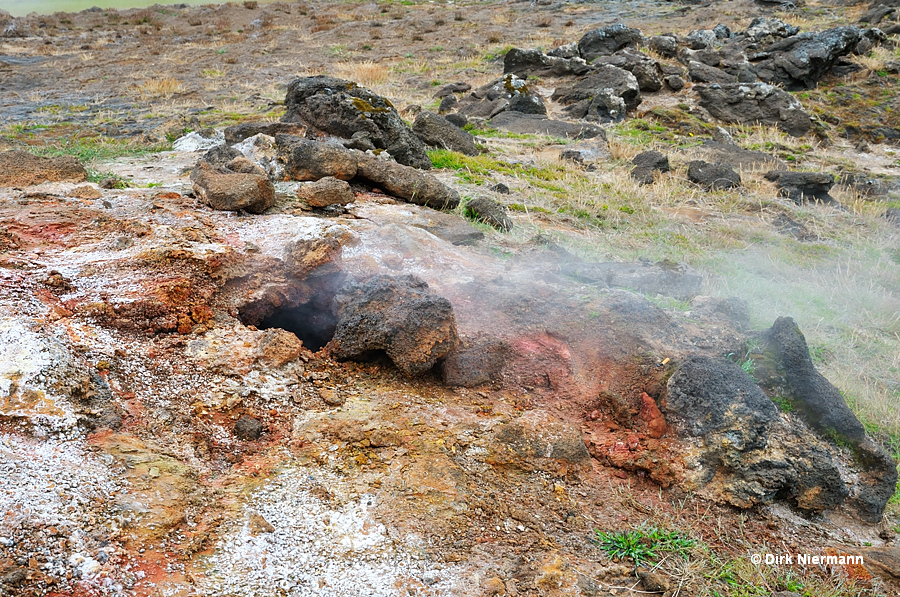Gunnuhver, Kísilhóll Group
Gunnuhver is a special geothermal area because a major part of its groundwater comes from the nearby sea, containing lots of salt and also dissolved silica. Continuous hot spring activity has formed huge deposits of silica sinter, today visible as silica hill.
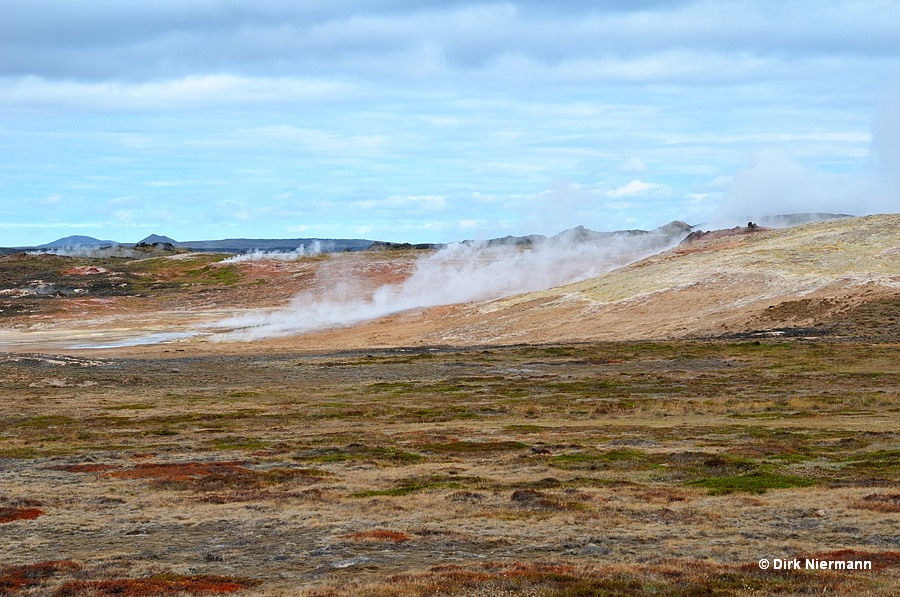
A huge number of fumaroles and mud pots are located at and around Kísilhóll. The following picture conveys a typical impression of a pinhole fumarole on the silica surface.
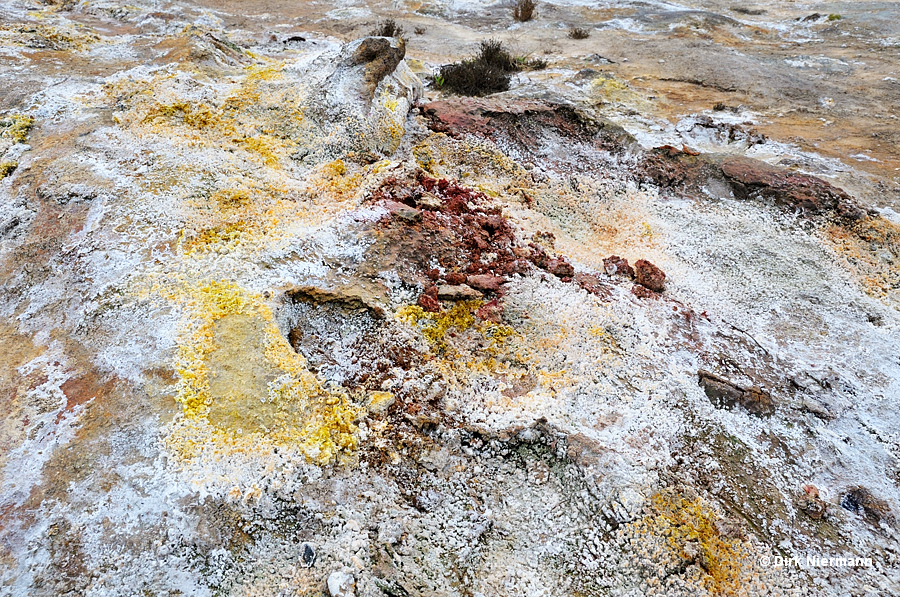
Best known is the vigorously boiling mud crater northeast of Kísilhóll, which came into being in 2007 and adopted the name Gunnuhver. Spanning a diameter of 66 feet (20 m) it is the largest mud pot in Iceland.
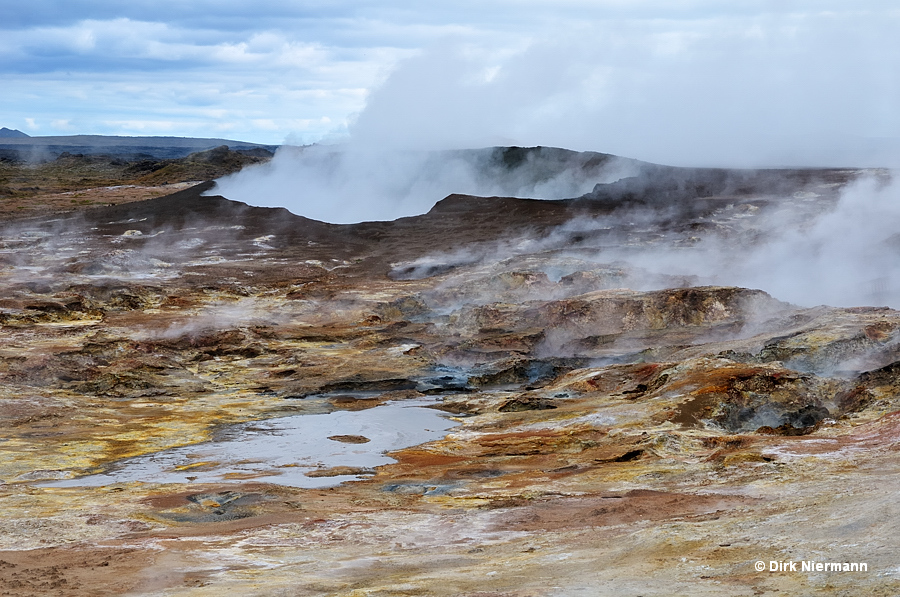
At the northern slope of Kísilhóll a pronounced hole attracts attention, probably a bowl of an extinct geyser or mud pot.
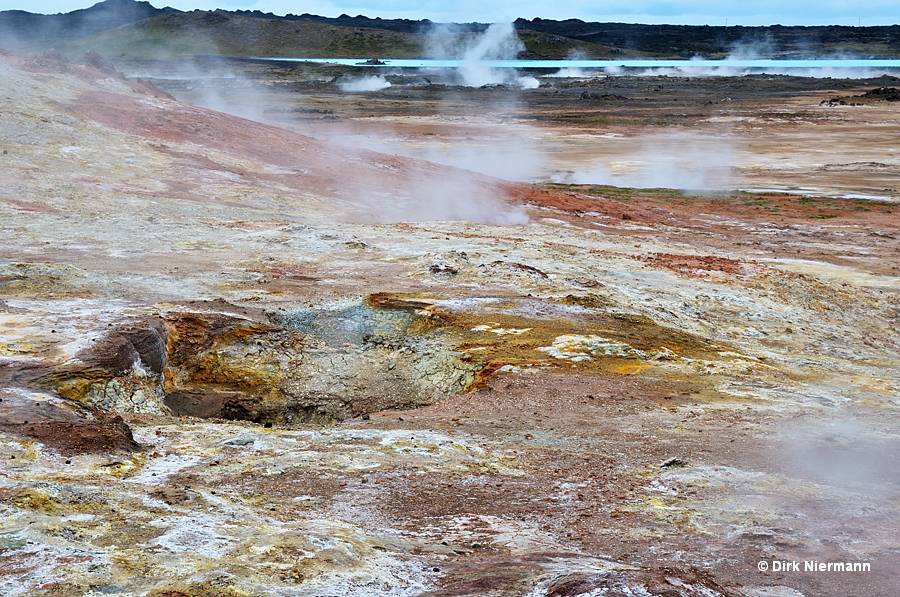
Three examples of fumaroles in the vicinity of Kísilhóll are shown below.
